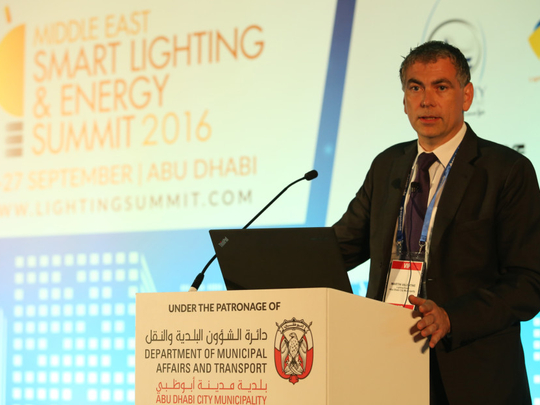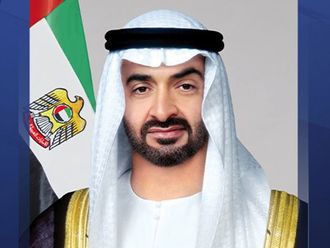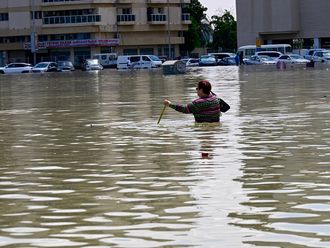
Abu Dhabi: Road surface brightness for new and retrofitted roads across the capital will be dimmed to conserve energy and reduce environmental impact, a senior municipal official said on Monday.
Contrary to popular perception, this comparative dimming will not negatively hamper drivers’ vision, said Martin Valentine, lighting expert at the Municipality of Abu Dhabi City.
“In 2011, newly introduced lighting regulations required sodium lamps on street lights to be replaced by LED fixtures, and road surface brightness was reduced by about 50 per cent on the roads. The changes introduced this year call for a further 33 per cent dimming on new road projects. Yet, this will not compromise road users’ safety in any way. Instead, there will be less eye strain for drivers, reduced energy consumption and more pleasant-looking roads at night,” Valentine said.
The expert was speaking to Gulf News on the sidelines of the Middle East Smart Lighting and Energy Summit, where 250 delegates and government officials met to discuss the trends and challenges in the industry.
In 2011, Abu Dhabi’s municipal sector regulator, the Department of Municipal Affairs and Transport (DMAT), issued new regulations for the lighting of roads and public spaces. One major element involved the replacement of conventional sodium lamps with LED fixtures, and as reported by Gulf News last year, about Dh3 billion is expected to be saved as a result.
These standards were further updated by the DMAT this year, and in addition to calling for dimmer road surfaces, they also require developers to incorporate dimming technology so that energy can be further conserved during periods of non-peak use.
“Sodium lamps also created bright hotspots in some places, and left the surrounding areas in the dark. This was a strain for road users, affected sleep patterns of young children and could cause headaches for the elderly. In contrast, LED lights create a warm even tone that makes driving easier and public spaces more pleasant,” he said.
In addition, sodium lamps also need to be changed about once every two years, compared with the 12-year average lifespan of an LED fixture.
“So, despite more than 20,000 hours of use over five years, not even one of the more than 5,600 light fixtures across the retrofitted Shaikh Zayed Street has failed so far,” Valentine said.
About 60,000 LED lights have so far been installed across the retrofitted Shaikh Zayed Street and tunnel, as well as in Khalifa City, Yas Island and the upcoming Al Mafraq interchange. In a newer development project in South Shamkha, the fixtures will also have the capacity to be dimmed.
“In Shaikh Zayed Street alone, the investment in LED technology has been recovered within just five years through savings in the cost of maintenance, disposal and energy use. And the municipality is now saving about Dh600,000 annually,” Valentine said.
In addition, LED fixtures do away with the poisonous mercury that can leak out if sodium lamps are improperly disposed of, the official added.










